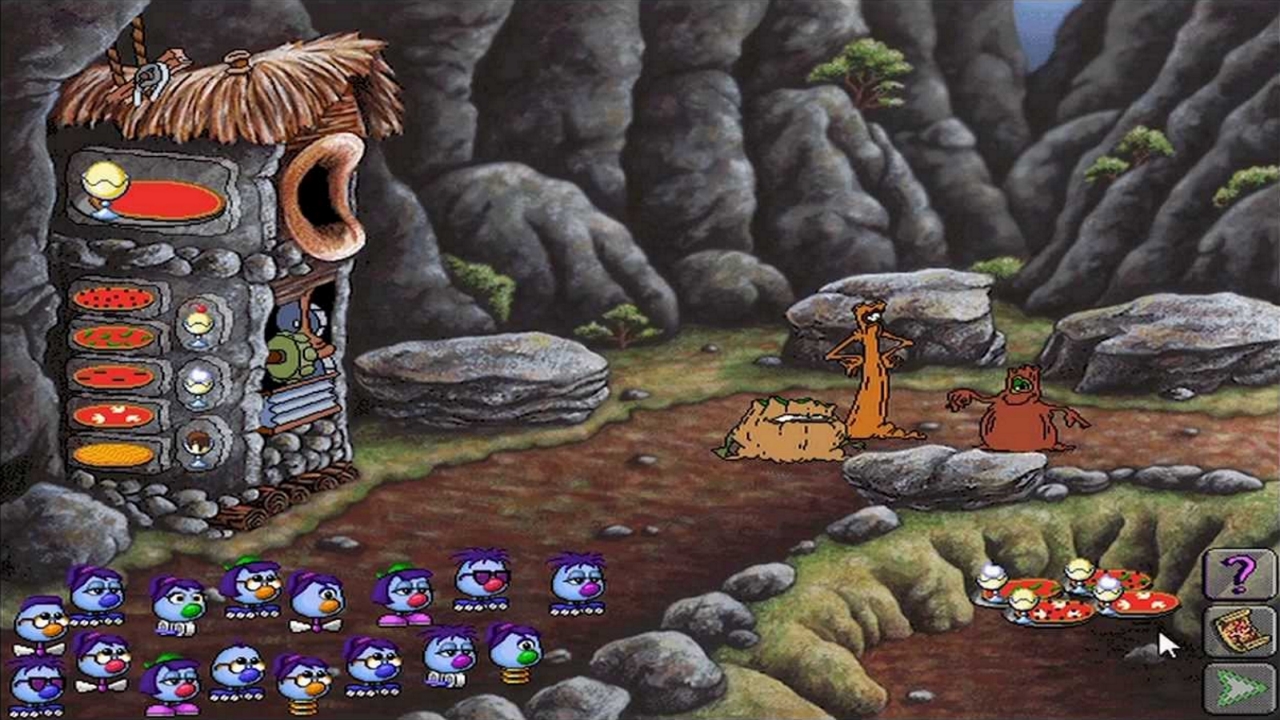
If you play a few rounds of "Very Hard" and "Very Very Hard" on practice mode, the difference should become quite clear.

In both examples the Zoombinis differ in one feature, but the Fleens differ in either two or zero features. These two examples: do not follow the same rules as "Very Hard". "Very Very Hard" is no longer exactly the same in this release. If two Zoombinis match all but their nose color, their Fleens should also be matching except for one feature (however this time it may be hair, eyes, nose, or feet.) This matches your guide, and the classic version of Zoombinis. On "Very Hard" features don't correspond directly. If two Zoombinis have the same noses, their Fleens will also have matching noses. If two Zoombinis have different hair, the corresponding Fleens will have different hair as well. The four difficulty levels are Not So Easy, Oh So Hard, Very Hard. On "Not So Easy" and "Oh So Hard", it behaves the same way as before. The Logical Journey of the Zoombinis is the first game in the educational software. Up until Very Hard, the rules are the same as in your guide. It makes me realise how much I must be missing now.However, the Very, Very Hard level on Fleens! seems to be following different rules in this version of Zoombinis. (It actually got updated and re-released a few years ago, and I haven't gone back to check.) Either way, if Steam had been a thing back then, I never would have tasted it. Or maybe it was only good in the way that even the worst meal tastes amazing when you’ve not eaten in days. It was way harder than it sounded, and I’ll still remember the petulant roar of “more toppings!” that the lead bellend would emit whenever he was displeased, because I heard it so many times. I can’t remember what the rules were, but each of the wood-faced bastards would stipulate or forbid their own set of toppings, and you’d have to work out what pizza would please them all.

I think you needed to get around half the zoombinis to their new home to win, so when the puzzles got really tough and your attrition rate soared, it was actually pretty tense.Īnyway, the best puzzle was the encounter where you had to use a big machine (with disconcerting fleshy lips) to make pizzas, in order to satisfy three tree stumps who were complete dickheads. You’d lose some on the way, but once you’d dropped off the survivors, you’d start afresh with a new load, and the puzzles would be a bit harder, in a sort of game+ mode. You had a thousand-odd little blue fellows with different combinations of facial features, and you had to shepherd them, a few dozen at a time, across a landscape comprising ten or so screens, each of which was some sort of logic-based minigame. Zoombinis was way better than it had a right to be. Enter, then Logical Journey Of The Zoombinis. But the real bonanza, however, came during the school summer holidays, when mum (who was a teacher) would bring home a grab-bag assortment of janky educational titles for me to beast my way through over the break. So I played everything I could get my hands on. It was, somehow, actually possible to run out of games. It wasn’t a great PC, and games were expensive, so I didn’t get new ones that often. A wilderness of sweets, as Milton oh-so-subversively described Eden. It’s a wonder beyond anything I could have dreamed of as a kid, but it’s also a wonder I might not have wished for.
HARDEST ZOOMBINI GAME PC
If I’ve heard of a game, the odds are I can have it on my PC in as little as a couple of minutes. But only since the advent of digital distribution, have their numbers so wildly and obviously exceeded my capacity to get through them all. Well, there were always too many games to play. There are, these days, far too many games to play. One a day, every day, perhaps for all time. Have You Played? is an endless stream of game retrospectives.


 0 kommentar(er)
0 kommentar(er)
